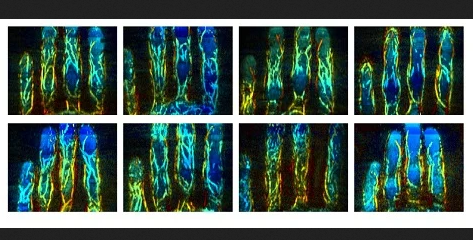Biometric authentication has become a common tool for human identification with applications ranging from corporate security to mobile devices. Scientists have developed a new method using three-dimensional (3D) finger vein biometric authentication.
The findings have been recently published in the journal Applied Optics. Combining photoacoustic tomography and a recognition algorithm resulted in a 99% accuracy of accepting or rejecting identification.
Previous fingerprint authentication uses two-dimensional technology, which results in false acceptance or rejection. Using biometrics has also been a preferred alternative to traditional passwords to avoid hacking.
Scientists are continually developing new systems that are compact and so that imaging time to be reduced. The new method was developed by researchers from the State University of New York, University at Buffalo, and Princeton.
Jun Xia shared that the new 3D finger vein biometric authentication method involves specificity not possible with previous fingerprint authentication. Since every person's 3D vein pattern is unique, it would be near impossible to fake a vein biometric. It "would require creating an exact 3D replica of a person's finger veins," explained Xia.
Upgrading former 2D imaging to 3D increases security measures. Counterfeiting an identity is a lot more complicated, while the security system would less likely accept a false identity as was possible with previous methods.
Photoacoustic Tomography
The photoacoustic tomography technology the researchers worked with combines light and sound. A laser light illuminates the finger. As the light comes in contact with finger veins, it creates a sound picked up by an ultrasound detector. The light and sound combination then creates a 3D image of the finger vein pattern.
Photoacoustic tomography has also had clinical diagnostic applications. The sensitive technology can detect blood cells, melanin (skin pigment), and other biomarkers.
Xia shared the challenges of applying photoacoustic tomography for finger vein biometrics due to "the bulky imaging system, small field of view, and inconvenient positioning of the hand." The team redesigned the existing technology by developing a new combination of acoustic beams and light focused on finger vein imaging.
READ: New Microendoscopy Technique Can Record Images of Red Blood Cells Pixel by Pixel

Future Applications for the System
Aside from combining the acoustic beam and light in the new design for efficient detection, they also created an imaging window similar to a fingerprint scanner. Wenyao Xi developed the algorithm for the finger vein biometric authentication to work with 3D imaging.
The new system was tested on 36 people whose fingers from both hands, excluding the thumbs, were imaged. Results showed that the technology was accurate, especially if there were records of multiple finger veins from each user.
Giovanni Milione shared that they hope their technology would someday be used as a security system for various facilities such as military bases and banks. As they continue to develop a miniature version of their design, the 3D finger vein biometrics may also be applied for electronic devices as an additional security measure in two-factor authentication. Currently, smartphones have ultrasound systems, which may someday be upgraded to a photoacoustic system.
READ: German Scientists Design World's Smallest Ultrasound Detector
Check out more news and information on Photoacoustic Tomography on Science Times.
© 2026 ScienceTimes.com All rights reserved. Do not reproduce without permission. The window to the world of Science Times.












